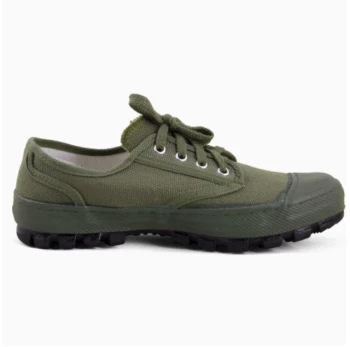The differences between leather and crepe soles for chukka boots primarily revolve around formality, comfort, and functionality. Leather soles are traditionally associated with formal settings, offering a polished look and durability, while crepe soles are favored for their softness and comfort, making them ideal for smart casual or relaxed occasions. The choice between the two depends on the intended use, with leather excelling in indoor and formal environments, and crepe providing better comfort for everyday wear.
Key Points Explained:
-
Formality vs. Casual Wear:
- Leather Soles: These are the default choice for formal settings. They provide a sleek, polished appearance that aligns well with business or dressier occasions.
- Crepe Soles: These are trendier for smart casual or "dress-down" scenarios, such as Fridays or relaxed outings. Their textured, rustic look leans more toward casual aesthetics.
-
Comfort and Softness:
- Crepe Soles: Known for being exceptionally soft and comfortable, crepe soles are ideal for prolonged wear, reducing foot fatigue. This makes them a popular choice for everyday use.
- Leather Soles: While durable, leather soles are typically stiffer and may require a break-in period. They lack the immediate cushioning effect of crepe soles.
-
Functionality and Suitability:
- Leather Soles: Best suited for indoor environments and formal attire. They offer less grip on slippery or wet surfaces, making them less ideal for outdoor or rugged use.
- Crepe Soles: Although not as grippy as rubber soles, crepe soles provide better traction than leather on uneven or slightly wet surfaces, adding versatility for light outdoor use.
-
Durability and Maintenance:
- Leather Soles: Generally more durable over time, especially with proper care like regular polishing and avoiding excessive moisture. However, they can wear down faster on rough surfaces.
- Crepe Soles: Softer and more prone to visible wear and tear, but their comfort often outweighs durability concerns for casual wearers. They may also attract dirt more easily due to their textured surface.
-
Aesthetic and Style:
- Leather Soles: Offer a classic, refined look that pairs well with tailored clothing or formal chukka boot designs.
- Crepe Soles: Provide a more relaxed, earthy vibe, often complementing suede or less structured upper materials for a laid-back style.
-
Historical and Brand Context:
- Traditional desert boots, which share some design elements with chukkas, typically feature suede uppers and crepe soles. Modern chukka boots, however, are more versatile, allowing for leather soles in formal iterations or crepe soles in casual variants. Brands like Clarks, the originator of the desert boot, often stick to crepe soles for authenticity, but leather-soled chukkas are widely available for those seeking a dressier option.
Understanding these differences helps in selecting the right sole based on the occasion, comfort needs, and desired functionality. Whether prioritizing elegance or ease, the sole type significantly influences the boot's overall character and usability.
Summary Table:
| Feature | Leather Soles | Crepe Soles |
|---|---|---|
| Formality | Best for formal settings | Ideal for smart casual wear |
| Comfort | Stiff, requires break-in | Soft, cushioned for all-day wear |
| Functionality | Less grip, suited for indoors | Better traction for light outdoor use |
| Durability | Long-lasting with proper care | Softer, shows wear more easily |
| Aesthetic | Classic, polished look | Rustic, relaxed vibe |
Looking for high-quality chukka boots tailored to your needs? As a large-scale manufacturer, 3515 produces a comprehensive range of footwear for distributors, brand owners, and bulk clients. Whether you need formal leather-soled chukkas or comfortable crepe-soled designs, we’ve got you covered. Contact us today to discuss your requirements and explore our production capabilities!
Related Products
- Durable Leather Safety Boots for Wholesale & Custom OEM Manufacturing
- Wholesale Durable 6-Inch Work Boots | Custom & Private Label Manufacturer
- Durable Leather Work Boots Wholesale Manufacturer & Custom Factory
- Wholesale Smart Casual Sneakers with Dial Closure | Factory Direct Manufacturing
- Wholesale Classic Leather Lace-Up Ankle Boots for Brand Manufacturing
People Also Ask
- How do steel toe boots compare to composite toe boots in terms of protection?
- What protection standard does the steel toe meet? ASTM F2413-18 EH I/75 C/75 Explained
- What's the difference between safety toe and steel toe? Choosing the Right Protective Footwear
- What's the difference between steel toe and safety-toe boots? Choosing the Right Protection for Your Job
- What does OSHA say about steel toe boots? Essential Safety Standards & Compliance



















